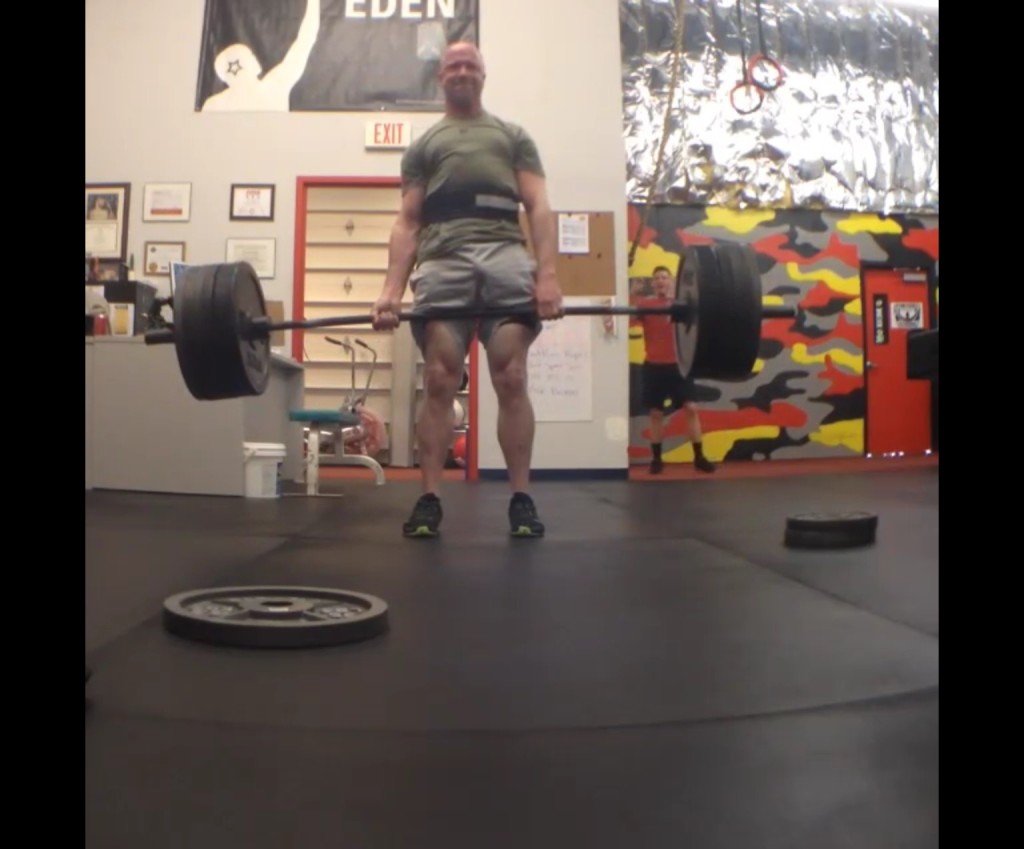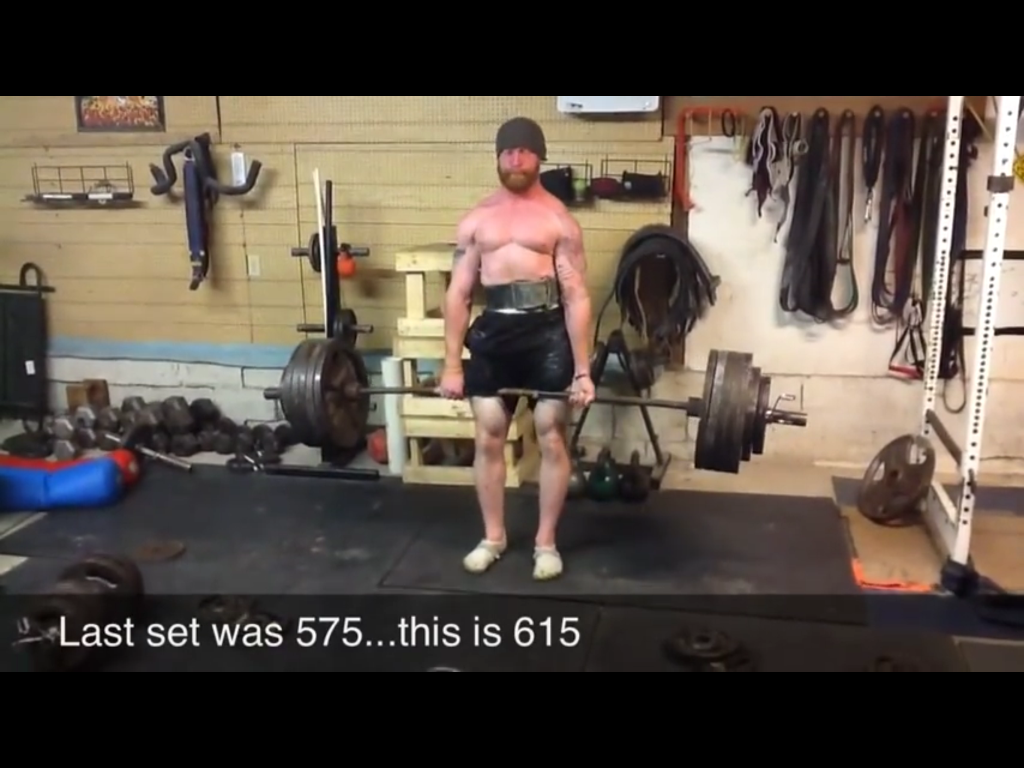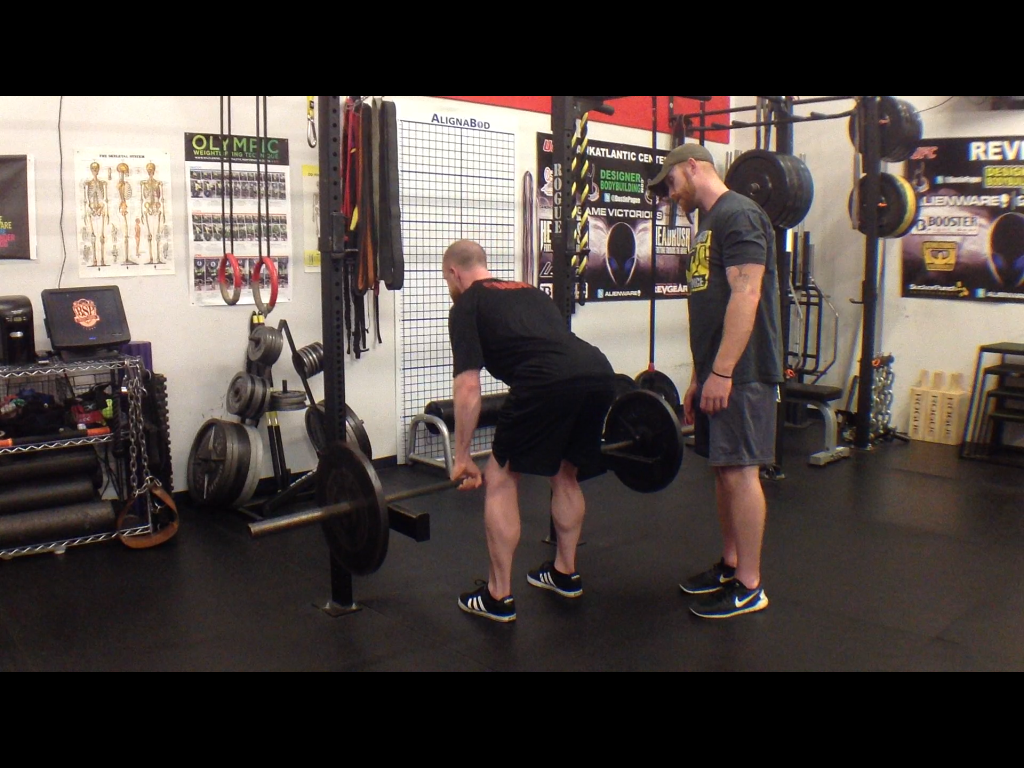This lesson is devoted to mastering the hip hinge to further deadlifting domination. The hip hinge, in all its precise glory, is the precursor to deadlifting plates stacked on plates.


But why is mastering the simple hinge so important for deadlifting success? The internet is a playground of bravado brimming at the edge of rounded lumbars and chins destined to reach the ceiling. These spine-morphing deadlift efforts usually haul heavy weight from floor to lockout. Precision doesn’t seem all that important.
We have five essential reasons—the lumbar discs.
In 2005 a powerlifter we know well was poised to win the IPA World Championship at York Barbell in York, Pennsylvania. And, well, he did, but not without consequence.
Toward the end of the grueling, nine-lift day he felt a pain that on the left side of his lumbar spine. Within the coming days that pain travelled down his leg and into his foot. Then, this iron giant’s leg began giving out on him. He’d herniated a lumbar disc.
Our story denotes a specific event, but it was a cumulative injury. He’d trained with poor spinal position during his entire training cycle leading up to the meet; continually loading his lumbar spine in a flexed position.
We’re not scientists, but logic connects the injurious dots.
This, gentlemen, is why it’s imperative to take step back and clean up the hip hinge.
Let’s begin with a definition.
The hip hinge moves the hips through an entire flexion (closing) and extension (opening) cycle while limiting movement at all other joints. Think maximal hip bend, minimal knee bend, and no spinal movement.
Simple, concise, understandable.
But how do we know that we’re hinging well?
While it sounds simple, the hip hinge is a tough movement for many folks to grasp. They often want to morph it into a squat or move their spine instead of their hips.
Let’s think success first and bullet point a good hip hinge:
Here’s a bad hip hinge:
Each deadlifting movement, from rack pull to trap bar, requires a solid hip hinge for optimal performance. If a lifter can’t hinge into a tight position, it’s impossible for them to build optimal tension and direct force into the ground while lifting to lock out.
The key that unlocks the hip hinge/deadlift door is finding the bottom hinge position that promotes the greatest level of hamstring tension while keeping the spine neutral.
The goal is to find this position with your unloaded hinge and then apply that to all of your deadlifting movements.
A solid deadlift begins with a simple cueing mantra: T.R.D.
T= Tall and Tight
R= Reach
D= Drive
Tall and Tight

Tall and tight cues upper-body positioning. Tall implies neutral spine. Tight implies a crushing grip, “breaking†the bar, and pulling the bar back into the body. (Pulling the bar into the body only applies to barbell deadlift movements: conventional DL, sumo DL, RDL and rack pull.)

Reach
Reach means reach the hips back until there’s hamstring tension. This requires a neutral spine and knees unlocking. Without either, peak hamstring tension is impossible.
The knees bend, but we don’t bend at the knees. Make sense?
It’s also important to balance weight in the feet while reaching. Most folks have a tendency to transfer weight into their heels as they reach. This dog just won’t hunt.
Transferring weight to the heels causes the hips to drop—meaning the hinge devolves into a grotesque squat/hinge hybrid. If this devolution doesn’t happen during the initial hinge, it will occur as the weight is lifted. Keep weight centered in the middle of the feed by “dialing.†We’ll cover dialing in a separate lesson.

Drive
Drive is our cue to move from bottom position to top position—it means “drive the floor away.†We do this to extend the hips and knees in unison. So, commence your deadlifts by driving your feet through the floor, or driving the floor away.
We’ll use several deadlift variations during the program, so we’ll not cover specific set-up during this lesson. Each variation requires its own set-up, so we’ll cover these each in separate demonstration videos.
Gents, you’ve just completed the deadlift lesson. You are all now 10% to 20% more bad ass.

